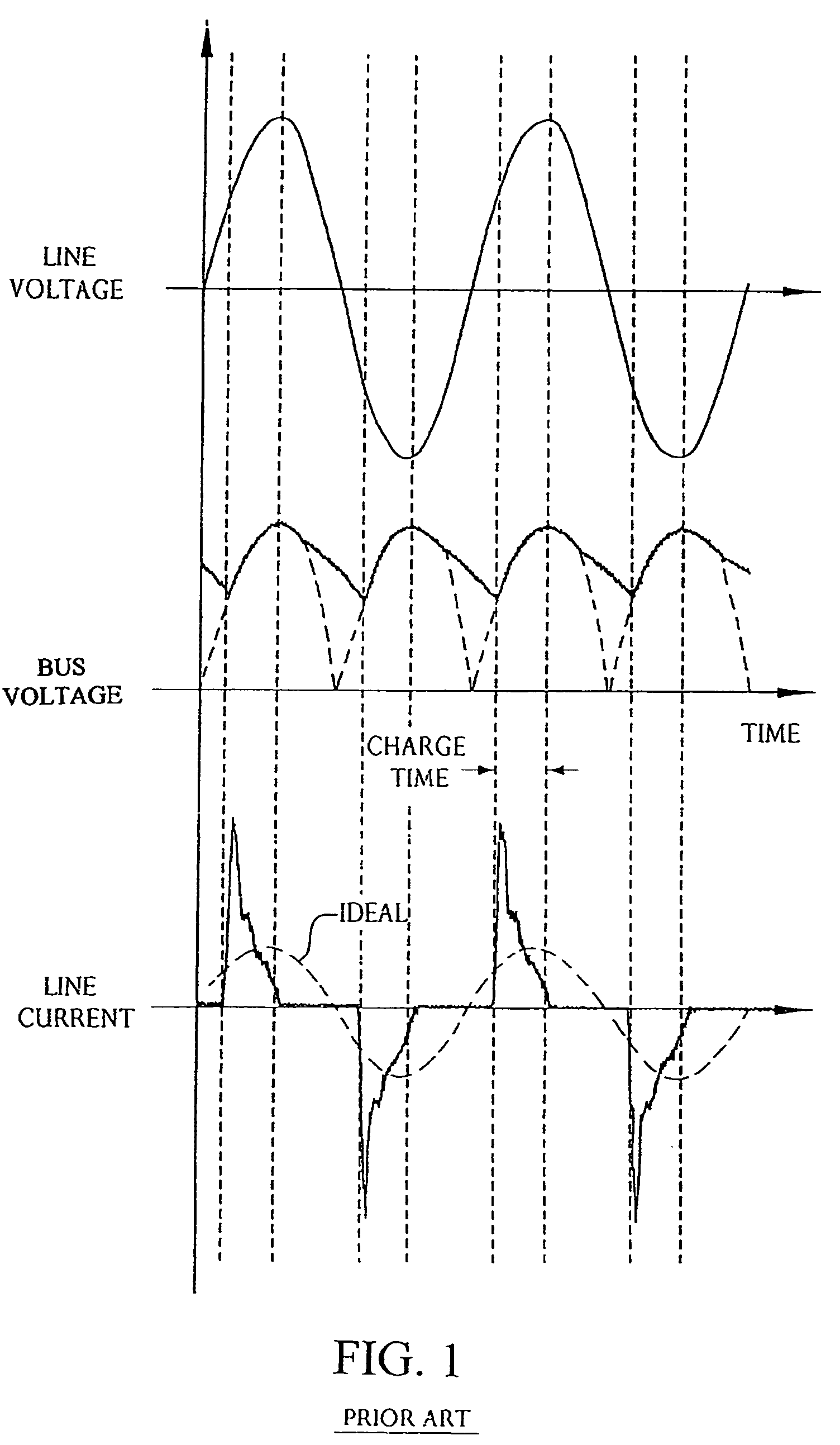Electronic ballast
a technology of electronic ballast and electronic ballast, which is applied in the direction of electric variable regulation, process and machine control, instruments, etc., can solve the problems of large bus capacitors, more expensive, and occupying more area on printed circuit boards
- Summary
- Abstract
- Description
- Claims
- Application Information
AI Technical Summary
Benefits of technology
Problems solved by technology
Method used
Image
Examples
first embodiment
[0077]The control circuit 882 will be described with reference to FIGS. 20, 21, and 22. the control circuit 882 generates output drive signals to control the conduction of the switching devices 2112 and 924. The control circuit 882 receives as an input the half-wave rectified voltage from the current sense circuit 2240 and generates a DC voltage that represents actual light output from the lamps. This DC voltage, representative of light output, is compared to a reference voltage, indicative of a desired light level, to adjust the duty cycles of the switching devices 2112, 924 so as to minimize the difference between the light output voltage and the reference voltage. In a dimming electronic ballast, the reference voltage may be provided by an external input such as a 0-to-10 Volt control signal. Alternatively, the reference voltage may be generated by detecting a phase angle control signal applied to the ballast by means of the AC line voltage. In yet another embodiment, the referen...
second embodiment
[0089]the feedback circuit 2440 of FIG. 20 is shown in FIG. 24 and includes a microcontroller 26102 coupled to receive as inputs representative of the desired light level and the lamp current, and produce as outputs signals for driving the gates of the inverter switches. One such microcontroller suitable for use is manufactured by Motorola Corporation under the model number MC68HC08. For simplicity, analog-to-digital and digital-to-analog circuits necessary for interfacing the microcontroller 26102 with the analog circuitry of the ballast are considered to be within the ordinary skill of the art and are not shown here.
third embodiment
[0090]the feedback circuit 2440 of FIG. 20 is shown in FIG. 25 and includes in addition to the microcontroller 26102 a gate driver circuit 26104 that receives a single gate drive signal from the microcontroller 26102 and produces signals capable of controlling the operation of the inverter switches. One such gate driver circuit suitable for use is manufactured by International Rectifier under the part number IR2111. Of course, other suitable microcontrollers (such as a PIC16C54A from Power Integrations) and gate drivers may be substituted for the specific embodiments mentioned here. In addition, an application specific integrated circuit (ASIC) (not shown) may be substituted to provide the same functionality as the microcontrollers disclosed herein.
[0091]A high-level flowchart illustrating the operation of the feedback control circuit embodiment of FIGS. 24 and 25, shown in FIG. 26, includes the steps of measuring the lamp current IL (step 26110), and measuring the dimming signal VD...
PUM
 Login to View More
Login to View More Abstract
Description
Claims
Application Information
 Login to View More
Login to View More - R&D
- Intellectual Property
- Life Sciences
- Materials
- Tech Scout
- Unparalleled Data Quality
- Higher Quality Content
- 60% Fewer Hallucinations
Browse by: Latest US Patents, China's latest patents, Technical Efficacy Thesaurus, Application Domain, Technology Topic, Popular Technical Reports.
© 2025 PatSnap. All rights reserved.Legal|Privacy policy|Modern Slavery Act Transparency Statement|Sitemap|About US| Contact US: help@patsnap.com



